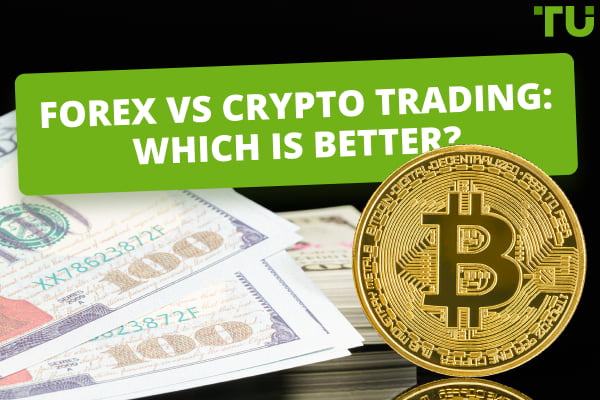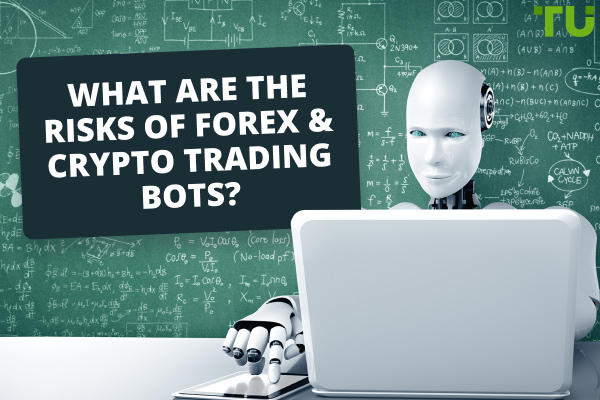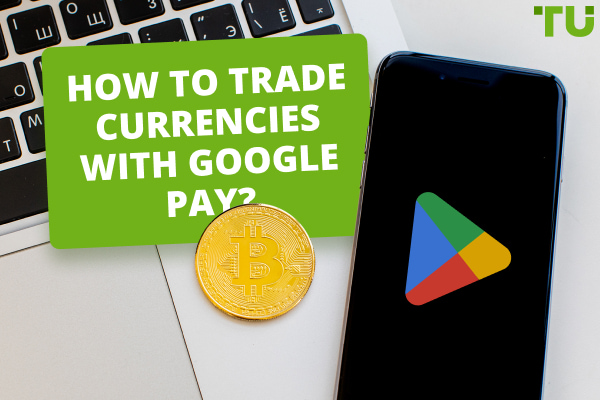What is the Metaverse
On 28 January 2023, Mark Zuckerberg, creator of Facebook Inc., renamed his company into Meta. Meta is now a transnational holding company that owns the largest internet platforms, including Facebook, Instagram and Oculus, as well as WhatsApp messaging app. Meta is the reflection of Zuckerberg’s incredible ambition and also a step into the future that the sci-fi writers have prophesied for over 30 years. It is a first attempt to consciously transfer digital technologies to a fundamentally new level across the entire Internet. Below we will provide a clear definition of the Metaverse and consider the prospects of development of this concept.
Start investing in metaverse coins right now with Binance!Definition of the Metaverse
Which one is correct – the Metaverse or the Cyberspace? Upon hearing this question, nine out of ten people will put an equal sign between the notions and they will be right. It is because there is no commonly accepted definition of the Metaverse at the moment. In futurism, it is a hypothetical virtual space that unites millions of users across the world within a conglomerate of three-dimensional worlds that coexist seamlessly.
Those who have read the Snow Crash by Neil Stevenson or watched Ernest Cline’s Ready Player One have a very good idea of what we are about to discuss. The concept of the Metaverse is inextricably linked with such technologies as virtual reality (VR) and augmented reality (AR). The question, however, is not about the technologies that we are going to use, but about the reasons for applying innovative developments in the field of IT.
To put it simply, the Metaverse is any virtual space a person accesses with VR, AR or a standard PC, and where he/she can perform certain actions, for example, play video games, buy and sell NFTs, exchange cryptocurrencies and fiat money with other users, trade digital and physical goods, read lectures, provide services of a psychologist or a math teacher. Each of these virtual spaces can be called the Metaverse. Also, all of them together are the Metaverse, albeit discrete.
Examples of Metaverses
Meta, Microsoft, Epic Games, Tencent – there are dozens of companies developing virtual spaces right now. Many projects have been around for several years; they were successfully launched and are developing progressively. The one thing to understand is that there is no global Metaverse at the moment that would unite all existing platforms. Each of them exists independently. It is possible that this will change in the future and the players from Fortnite will be able to freely switch to World of Warcraft.
We mentioned video gaming because this area has several excellent reference examples of the Metaverse. Epic Games’ online multiplayer Fortnite can be played on any platform from PC to Nintendo Switch. It has several modes, and players can buy in-game items and exchange them. In fact, this is an entertaining social platform that exists permanently at any time, regardless of the actions of a particular player.
The other example that is not a video game is WeChat, owned by the Chinese company Tencent. The platform is a messaging app that supports text, voice and video messages, with a feature of exchanging multimedia files and built-in photo and video editing tools. In WeChat, you can also buy and sell various goods and services, from virtual (NFTs) to physical ones (cosmetics, clothing). The payment is performed inside the app; you can link a debit/credit card, an account or a cryptocurrency wallet to your account.
The third example of the Metaverse is the sensational Decentraland project, which was created by the Decentraland Foundation, but is now fully supported by the online community. It is a decentralized virtual reality platform realized in the form of nearly 100,000 plots of land. These plots exist only in Decentraland, and not in the real world. A user can buy a plot of land for MANA and… do anything he wants with it. For example, he can open a virtual casino or a virtual version of his physical store (for example a sporting goods store).
Key features of the Metaverse:
-
Any virtual multi-user project is a Metaverse.
-
The Metaverse is often, but not always, associated with VR and AR technologies.
-
There is no single Metaverse that unites all projects of this type.
-
Any Metaverse can be commercialized one way or the other.
We will discuss commercialization more below, although this process is quite evident. In Decentraland you can have a plot of land with a cryptocurrency exchange, where you can earn a profit as a fee on traders’ transactions. In Fortnite, players buy items for customization of their characters, which earns Epic a pretty penny. In WeChat, users buy and sell NFTs and also physical goods.
How to buy Metaverse NFTs and make money on it?Who creates Metaverses
Any multiplayer game, social or trading platform online can be defined as a Metaverse. And yes, Instagram and Telegram are also Metaverses. This means that the Metaverses existed even before Zuckerberg; he simply changed our understanding of these projects and attitude towards them.
The Second Life project created in 2003 is traditionally considered the first Metaverse. By the way, it successfully exists up to this day. This is somewhat similar to what we’ve seen in the Ready Player One movie we’ve mentioned before. The virtual world is an infinite number of zones that are created and maintained by players. On his territory, a player can build a Medieval castle or a futuristic skyscraper, build a flower garden with unicorns or an amphitheater. People gather in popular zones to communicate, play board or role-playing games, and fight in various settings (these zones resemble traditional video games).
Second Life is a free project; any player can get a separate zone and design it, using the broad possibilities of a built-in editor (there is, however, a fee for the maintenance of the zone). The project has its own economy based on the internal currency Linden Dollars, which can be purchased for fiat money or cryptocurrency. All payments inside the Metaverse are performed with Linden Dollars; users can withdraw virtual funds at any time by exchanging them for real money.
There is the area of 20th Century Fox in Second Life, where the film studio shows premieres of its films. Cisco also has a zone, where the company holds presentations of new products and speaks with the community. The Harvard Law School regularly holds free lectures on the platform, and Sky News has a virtual news section. Second Life Marketplace is hugely popular with thousands of physical and virtual goods sold there.
The Sansar project, which is being developed by the same company, will become the next level of Second Life. You can check out this Metaverse already in the early access mode. It will feature all the mechanics of the original Second Life, but with VR technology.
Therefore, not only Mark Zuckerberg is creating a Metaverse. Everybody working in the field of innovative technologies and launching large-scale online projects, including games, messaging apps, social networks is creating it. Some titles became the Metaverse spontaneously. For example, the Half-Life Alyx video game was released in November 2019. It could be played only wearing the VR glasses. The game gained enormous popularity even before the release, which Charles Cumber, a high school teacher from San Diego, decided to take advantage of.
The thing is that the first location of the game features an interactive glass, a chalk set and an eraser. Cumber bought the game and held a mathematics class in it using an Oculus VR headset. At the time, California announced severe restrictions due to COVID-19 and the transition to remote learning was dictated by necessity. Since then, however, Charles regularly holds classes in the game for everybody, broadcasting them through a streaming service.
Top 10 Metaverse stocks to buyThe Metaverse and NFT
As soon as the talk about the Metaverse turned serious, it became clear that it would be closely associated with NFT, because NFT exists at the “junction” of IT, finance and art, just as any Metaverse. As a reminder, NFTs are non-fungible tokens; there is only one copy of each and it cannot be equivalently substituted. To put it simply, NFT is a cryptographic certificate of a digital object, a marker that tells us who owns a specific virtual artifact.
Any Metaverse needs it, because, first, the user needs to continuously confirm his right to ownership of the land, clothes, avatar, real estate, concert ticket, etc. On the one hand, NFT allows you to create a unique token, while on the other hand it operates on the blockchain and therefore guarantees transaction transparency. The owner is written in the NFT token’s metadata.
Second, NFT makes commercial interactions in the Metaverse much simpler. For example, a psychologist issues an NFT for a one-hour session. He can sell or gift this NFT and the other user can resell it. Non-fungible tokens can be used as a movie ticket or an entry to a private club.
But why do we need NFTs, when digital goods are successfully bought and sold even without them? The thing is that non-fungible tokens are created using smart contracts. These contracts prescribe automatic performance of specific actions once certain conditions are met. When a contract is concluded between two parties, the buyer will not gain ownership to the object until the seller receives the money and vice versa. At that, the seller and the buyer do not need to interact with each other or with third parties. The seller posts the token on the platform and the buyer buys it. The smart contract does the rest.
Then, there is security. Blockchain platforms are decentralized; a user or a group of users cannot interfere with their operation and transaction execution. The transactions are not executed if an error or inaccuracy occurs during hashing when the new block is being created. This rules out the possibility of fraud. The metadata of a token cannot be changed and it cannot be stolen if it is stored in, say, IPFS.
Naturally, there are many legal and organizational issues. These issues are being tackled by the creators of the Metaverses right now – Meta, Epic, Tencent, etc. NFTs are gradually being introduced to the Metaverse and at the moment the smart contract system looks like the perfect model of relationships in the virtual world.
Land in the Metaverse
We have already mentioned that there are platforms that provide virtual land to the users, where the latter can implement their own projects. We have to warn you however, that while there are dozens of such platforms, the absolute majority of them are fake, and many are not even registered, operating without the license (the license is required for such a platform, as it performs international commercial activity).
As of now (January 2023), there are five official Metaverses, where you can buy virtual land. They are Decentraland, The Sandbox, Somnium, Cryptovoxels and Upland. All of them are listed on the metaverse.properties website and regulated by the Meta Board; therefore they exist and develop under the same rules. Nonetheless, all five platforms are independent, which means that if you have land in Decentraland, and your colleague has land in The Sandbox, you won’t be able to merge or interact in any way.
These Metaverses are equally popular; you can buy or lease land in them at any time. There is an interesting paradox, however. In the real world, the value of land is determined by two factors. First, it is physically limited. Second, its price depends on the proximity to the center of the region. There is no center in the Metaverse and land is not limited. However, a year ago, a land plot in Decentraland and Sandbox cost USD 1,000, and now the prices start from USD 13,000.
What’s the reason for the price growth? The prices are driven by large companies ‘opening’ their offices in the Metaverses. Business is shifting to the virtual world; companies open offices, hold presentations and business meetings there, gather feedback from consumers and respond to them. It is cheaper to organize all of that in the virtual world than in the real one. In addition, there is a trend that, through the efforts of Meta, is gaining momentum by day.
Why do I need to buy land in the Metaverse?
First, you can turn your land in Somnium, Cryptovoxels or Upland into…. anything. For example, you can build a virtual estate on it of any design (even the one that is impossible in the real world because of the laws of physics). This house will be an expression of your individuality and you can invite friends to visit it, regardless of where they are in the real world. It’s like a video conference, but in a cozy visual environment; you set every aspect of it.
Second, you can present the results of your creative work on your land in the Metaverse. You can show paintings and virtual sculptures (3D modeling), organize and host concerts and fashion shows. By the way, it is possible to sell designer clothing inside the Metaverse for the user avatars, as well as in the real world. For example, Gucci has a big office in Sandbox, where the brand holds fashion shows and sells clothes (NFT and real).
Third, the Metaverse is an ideal environment for business development. A company can build a meeting room on its land to have daily, retro, corporate and other events. The room can be equipped with any multimedia equipment – from rollups to projectors. In the world, where the members of big teams are physically in different parts of the world, this is an effective solution for effort consolidation.
Fourth, you can build a virtual store on your land to sell goods, including real ones. Ask Coca-Cola whether this is a promising idea – the company is confidently growing its presence in Decentraland, buying out additional territories for expansion. In addition, popular platforms can be commercialized through advertising. For example, you have a popular art gallery, where you sell spots for advertising banner in order to earn profit. The effectiveness of such solutions has been confirmed by a number of studies conducted, for example, by Maff Media.
How to buy land in the MetaverseProspects of the Metaverse
In order to determine how successfully the Metaverse will be developing, some experts (for example Newton Casey) use cryptocurrency as an example. In 2009, very few people thought that Bitcoin was the future. Today, BTC is one of the largest financial industries in the world. Cryptocurrencies are so deeply embedded in the global economy that they will never leave it. Meta is being prophesied a similar path, but it will travel it faster.
We have already mentioned that large brands are already in the Metaverse and they are getting commercial benefits from it. Thousands of private entrepreneurs and individuals use the Metaverse for studying, art and entertainment. Many earn money on sales and provision of services – from paid tutoring to free exhibitions with the sale of ad spots.
Should you buy NFT? Definitely yes! Should you buy land in the Metaverse? Definitely yes! Can you earn a good profit in the Metaverse? Definitely yes, but only if you understand how the Metaverse works and how you can commercialize yourself. To sell art, lease your land out, open a virtual adult club with an entry fee – your possibilities in virtual reality are potentially unlimited. However, it is a serious matter that requires a considerate approach, risk evaluation and knowledge of the rules of investing.
FAQs
What is the Metaverse in simple words?
It is any virtual multi-user space, where the avatars of real people can interact with each other. The examples of the Metaverses include the MMORPG, messaging apps and social networks, platforms with virtual land. The Metaverse sometimes (but not necessarily) uses VR, AR and other latest technologies.
What is the connection between the Metaverse and NFT?
NFT allows the Metaverse to implement basic mechanisms. Non-fungible tokens prove ownership of a virtual object, such as land, a building, a movie ticket, or a private club. NFTs are created using smart contracts, they are practical, easy to use and secure.
Should I buy land in the Metaverse?
Buying or leasing land on the virtual platforms can bring high profits to major brands and to small private businesses. It can be profitable also to an individual, if a person works in some creative field, he can attract other users to his land and earn money from advertising.
What will happen with the Metaverse in the future?
Considering that the concept is being developed by such companies as Meta, Google and Microsoft, experts have no doubt that it has a future. The number of Metaverses will grow, as will the number of users on virtual platforms. However, you need to be careful when immersing into the Metaverse, taking into account all risks and opportunities.
Team that worked on the article
Andrey Mastykin is an experienced author, editor, and content strategist who has been with Traders Union since 2020. As an editor, he is meticulous about fact-checking and ensuring the accuracy of all information published on the Traders Union platform. Andrey focuses on educating readers about the potential rewards and risks involved in trading financial markets.
He firmly believes that passive investing is a more suitable strategy for most individuals. Andrey's conservative approach and focus on risk management resonate with many readers, making him a trusted source of financial information.
Dr. BJ Johnson is a PhD in English Language and an editor with over 15 years of experience. He earned his degree in English Language in the U.S and the UK. In 2020, Dr. Johnson joined the Traders Union team. Since then, he has created over 100 exclusive articles and edited over 300 articles of other authors.
The topics he covers include trading signals, cryptocurrencies, Forex brokers, stock brokers, expert advisors, binary options. He has also worked on the ratings of brokers and many other materials.
Dr. BJ Johnson’s motto: It always seems impossible until it’s done. You can do it.








